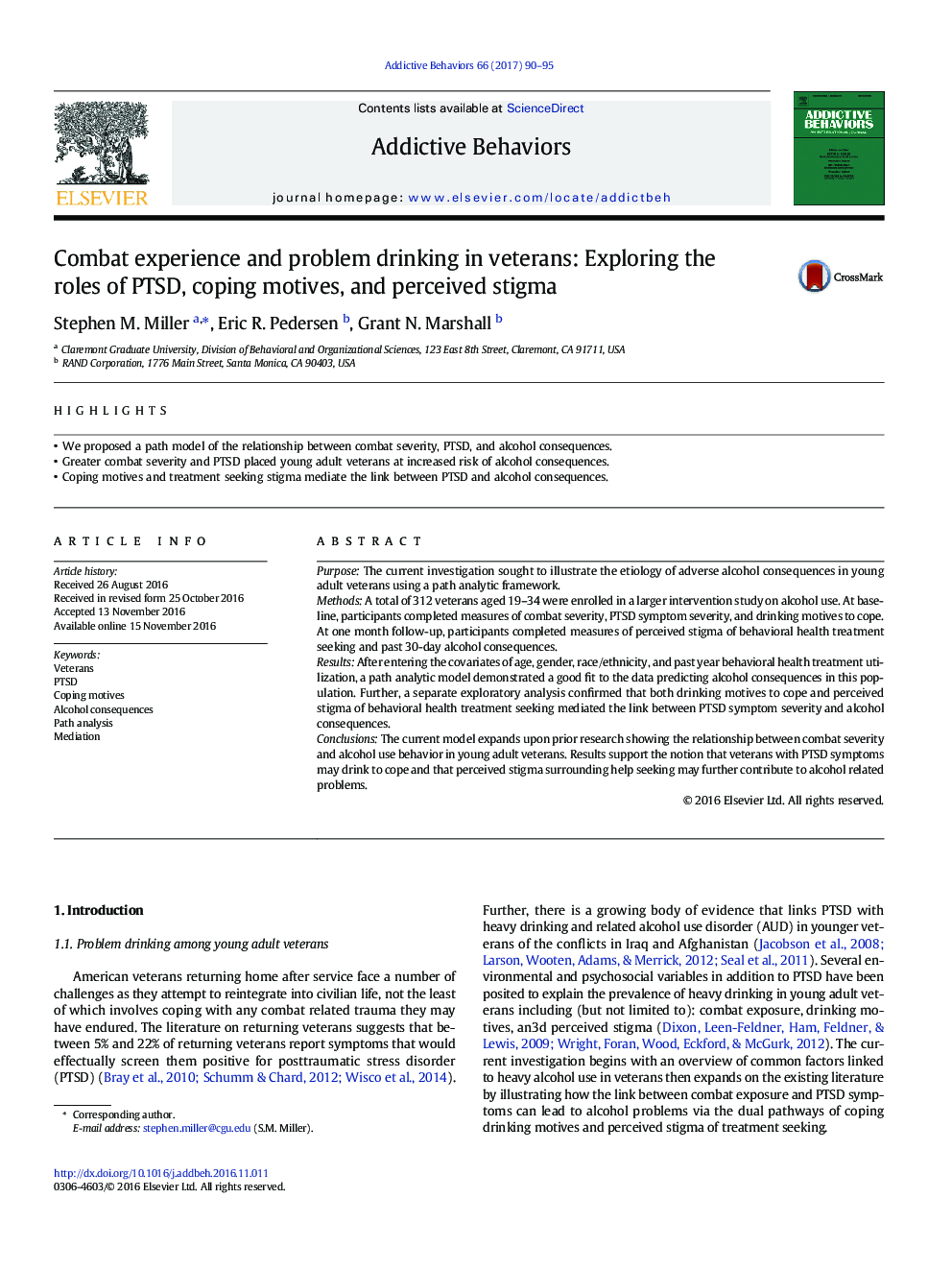| Article ID | Journal | Published Year | Pages | File Type |
|---|---|---|---|---|
| 5037864 | Addictive Behaviors | 2017 | 6 Pages |
â¢We proposed a path model of the relationship between combat severity, PTSD, and alcohol consequences.â¢Greater combat severity and PTSD placed young adult veterans at increased risk of alcohol consequences.â¢Coping motives and treatment seeking stigma mediate the link between PTSD and alcohol consequences.
PurposeThe current investigation sought to illustrate the etiology of adverse alcohol consequences in young adult veterans using a path analytic framework.MethodsA total of 312 veterans aged 19-34 were enrolled in a larger intervention study on alcohol use. At baseline, participants completed measures of combat severity, PTSD symptom severity, and drinking motives to cope. At one month follow-up, participants completed measures of perceived stigma of behavioral health treatment seeking and past 30-day alcohol consequences.ResultsAfter entering the covariates of age, gender, race/ethnicity, and past year behavioral health treatment utilization, a path analytic model demonstrated a good fit to the data predicting alcohol consequences in this population. Further, a separate exploratory analysis confirmed that both drinking motives to cope and perceived stigma of behavioral health treatment seeking mediated the link between PTSD symptom severity and alcohol consequences.ConclusionsThe current model expands upon prior research showing the relationship between combat severity and alcohol use behavior in young adult veterans. Results support the notion that veterans with PTSD symptoms may drink to cope and that perceived stigma surrounding help seeking may further contribute to alcohol related problems.
